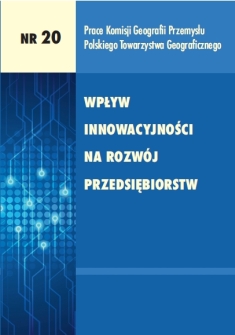Armament & national defense innovations as technology advances accelerator
DOI:
https://doi.org/10.24917/20801653.20.8Keywords:
innowacje, zbrojenia, technologiaAbstract
Contemporary computer models and strategic simulators often suggest that technologicaladvantage is the key in economical and geopolitical success of states. The overwhelming advancementin military research and technology in previous decades brought great inventions to the civilians andeveryday life, due to the utilitarian approach of modern societies. The first section of this study presentsa historical view on innovations, and reveals that during periods of economical and political instability,especially wars, the rate of technological development was hastened two or three times, compared toperiods of peace and prosperity. The second section presents examples of technological innovationsin the military sector and its civilian applications. The results of the study show that, although warsdecrease economic strength of states, crisis and development in the military sector has positive impacton their innovations and technological advancement. Thus, military funding of research not onlyhelps to secure statehood, but also makes new inventions available for whole societies, and providesa substantial, remarkable support for civilian companies which use advanced technologies.Downloads
Metrics
References
Brito D.L., Intriligator M.D., 1981, Strategic arms limitation treaties and innovations in weapons technology, “Publich Choice”, vol. 37 (1).
Dąbrowski Cz., Grobelny Z., 2007, Zmiany w strukturach, uzbrojeniu i sposobach prowadzenia działań taktycznych na przełomie XX i XXI wieku w wybranych państwach NATO, „Zeszyty Naukowe WSOWL”, nr 1 (143).
Dyskant J.W., 1983, Konflikty i zbrojenia morskie 1918-1939, Wydawnictwo Morskie, Gdańsk.
Forty G., 2009, Nowoczesne czołgi, Bellona, Warszawa.
Jakubczak R., 2002, Wojska obrony terytorialnej: militarne bezpieczeństwo Rzeczypospolitej Polskiej u progu trzeciego tysiąclecia, Bellona, Warszawa.
Kardasz R., 2010, Współpraca między wojskiem a przemysłem z punktu widzenia spółki przemysłu obronnego, Konferencja Stowarzyszenia Euro-Atlantyckiego: „Pieniądze dla armii zamówienia dla firm”, MSPO, Kielce.
Liebfeld A., 1975, Arcykapłani zbrojeń: z dziejów handlarzy i fabrykantów broni, Śląsk, Katowice.
Makowski A., 2000, Siły morskie współczesnego państwa, Impuls Plus Consulting, Gdynia.
Murray W., Millet A.R. (red.), 1996, Military Innovation in the Interwar Period, Cambridge University Press, Cambridge.
Münkler H., 2004, Wojny naszych czasów, Wyd. WAM, Kraków.
Parker G., 1988, The military revolution: military innovation and the rise of the West, 1500–1800, Cambridge University Press, Cambridge.
Rosen S.P., 1988, New Ways of War: Understanding of Military Innovation, “International Security”, vol. 13 (1).
Spalding R., 2009, America’s two Air Forces, “Air & Space Power Journal”, vol. 23 (2).
Sułek M., 2008, Programowanie gospodarczo-obronne, Bellona, Warszawa.
Świątnicki W., 1990, Wojna w kosmosie?, Wyd. MON, Warszawa.
Wilczyński P.L., 2010, Terytorium w myśli strategiczno-wojskowej, „Przegląd Geopolityczny”, vol. 2.
Wilczyński P.L., 2011, Warfare & peace research on universities, “Brazilian Geographical Journal”, vol. 2, n. 1.
Zarzecki T.W., 2002, Arms diffusion: the spread of military innovation in the international system, Routledge, New York.
Downloads
Published
How to Cite
Issue
Section
License
Articles are published under the terms of the Creative Commons License (CC BY-ND 4.0; Attribution– NoDerivs).

